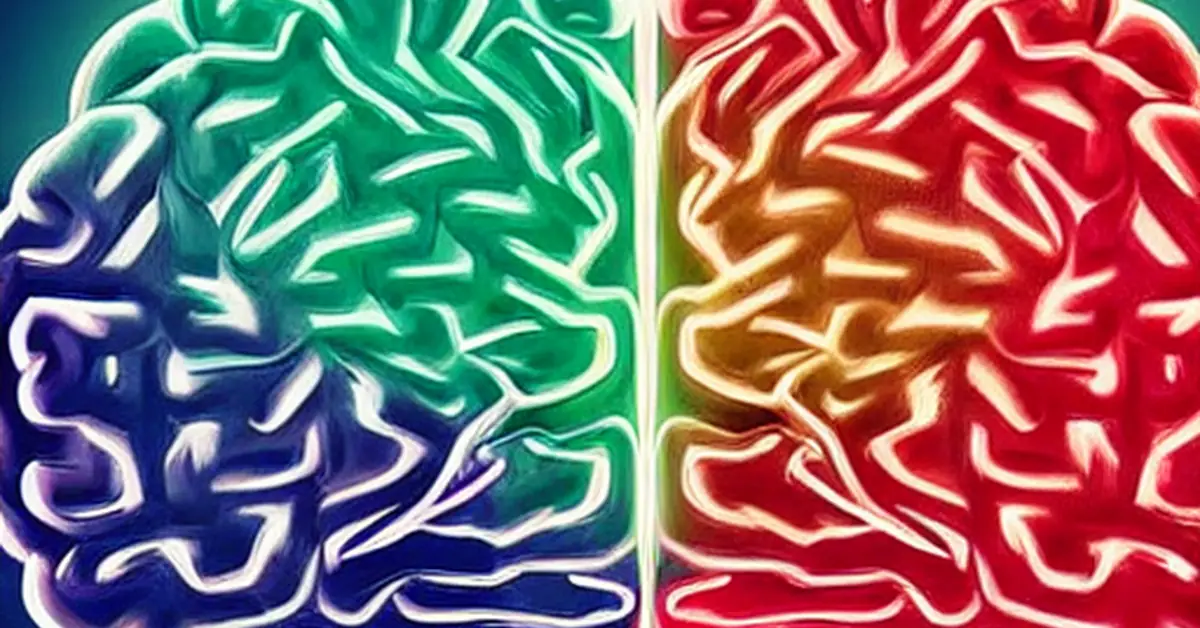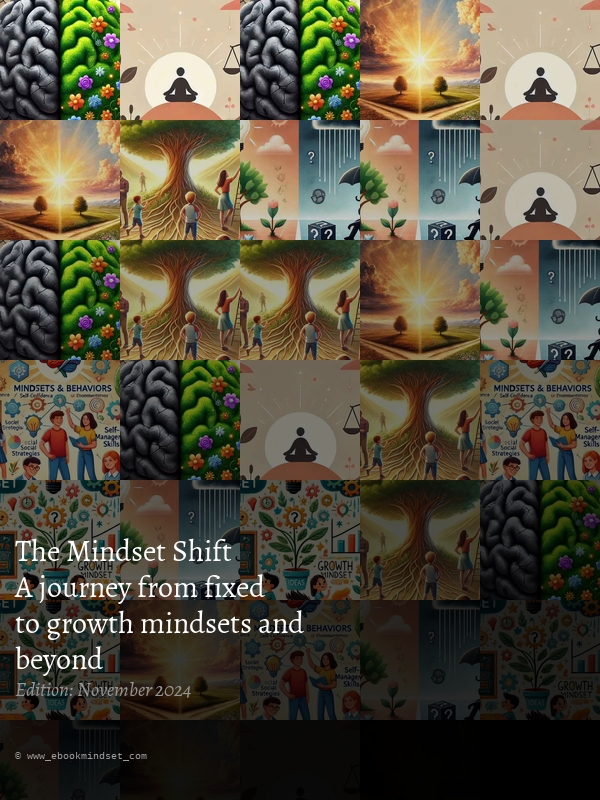How Does the Brain Play into a Mindset?
The relationship between the brain and mindset is a complex and fascinating topic, bridging neuroscience, psychology, and personal development. This article explores how the brain influences our mindset, the implications of neuroplasticity, and practical strategies for fostering a growth-oriented mindset. We will delve into the intricate workings of the brain, examining key regions and their roles in shaping our beliefs about ourselves and our capabilities. Furthermore, we'll explore how understanding neuroplasticity empowers us to actively cultivate a growth mindset, leading to enhanced resilience and overall well-being.
The Brain: A Detailed Overview
The human brain, a remarkably intricate organ composed of approximately 86 billion neurons, forms a vast and dynamic network responsible for our thoughts, emotions, and behaviors. These neurons communicate through intricate synaptic connections, constantly adapting and reorganizing in response to our experiences, learning, and the environment. This dynamic nature, known as neuroplasticity, is the key to understanding how our mindset can be shaped and reshaped throughout our lives. The brain's ability to change and adapt is not static; it's a continuous process of growth and refinement, a process that directly influences our mindset and overall cognitive function. Understanding the brain's structure and function provides crucial insight into how our mindset is formed and how it can be altered to promote personal growth and success.
Different regions of the brain play specific roles in various cognitive functions, including those directly related to the formation and maintenance of our mindset. The intricate interplay between these regions highlights the complexity of the brain-mindset relationship. The more we understand these interactions, the better equipped we are to consciously cultivate a growth-oriented mindset.
Key Brain Regions Involved in Mindset
Prefrontal Cortex: The Executive Center
The prefrontal cortex (PFC), located at the front of the brain, plays a crucial role in higher-level cognitive functions. It is the executive control center, responsible for decision-making, planning, problem-solving, and emotional regulation. The PFC's influence on self-beliefs and our responses to challenges is paramount in shaping our mindset. A strong PFC, supported by a growth mindset, enables us to approach obstacles with resilience and resourcefulness. Conversely, a weakened or less developed PFC might contribute to a more fixed mindset, characterized by avoidance of challenges and a tendency to give up easily.
Amygdala: The Emotional Hub
The amygdala, an almond-shaped structure deep within the brain, is the primary processor of emotions like fear, anxiety, and pleasure. Its influence on our mindset is significant, particularly during stressful situations. A hyperactive amygdala can trigger negative emotional responses, potentially reinforcing a fixed mindset. Conversely, a well-regulated amygdala, fostered through practices like mindfulness, can promote a more balanced emotional response, supporting a growth mindset.
Hippocampus: The Memory Architect
The hippocampus, a seahorse-shaped structure crucial for memory formation and consolidation, plays a vital role in shaping our mindset. Our past experiences, both positive and negative, are stored and retrieved by the hippocampus, influencing how we perceive ourselves and our abilities. Positive experiences can reinforce a growth mindset, while negative ones might contribute to a fixed mindset. The hippocampus's role highlights the importance of consciously creating positive memories and reframing negative ones to cultivate a growth mindset.
The Concept of Mindset: Fixed vs. Growth
Mindset, as defined by psychologist Carol Dweck, refers to the underlying beliefs we hold about ourselves and our abilities. This fundamental belief system significantly influences how we approach challenges, setbacks, and opportunities. Dweck identified two primary mindset types:
Fixed Mindset: The Static View
A fixed mindset is characterized by the belief that abilities are innate, static, and unchangeable. Individuals with a fixed mindset tend to avoid challenges, fearing failure as a reflection of their inherent limitations. They may interpret criticism negatively, focusing on perceived flaws rather than using it as an opportunity for growth. This can lead to a sense of helplessness and a reluctance to embrace new learning experiences. They tend to compare themselves to others, focusing on their shortcomings instead of celebrating their achievements.
Growth Mindset: The Malleable View
A growth mindset, on the other hand, embraces the belief that abilities are malleable and can be developed through dedication and hard work. Individuals with a growth mindset view challenges as opportunities for learning and growth. They see failures as valuable learning experiences, focusing on the process of improvement rather than solely on the outcome. They actively seek feedback, viewing it as a tool for self-improvement. They are persistent in the face of adversity, understanding that effort and perseverance are key to success.
The distinction between these two mindsets has profound implications for self-perception, motivation, and overall success in various aspects of life. A growth mindset consistently proves to be a more adaptive and resilient approach to life's challenges.
Neuroplasticity: The Brain's Capacity for Change
Neuroplasticity, the brain's remarkable ability to reorganize itself by forming new neural connections throughout life, is the foundation of learning and adaptation. This inherent adaptability is central to understanding how we can cultivate a growth mindset. It's not simply a matter of willpower; it's a process of actively shaping our brain's structure and function through consistent effort and targeted strategies.
Mechanisms of Neuroplasticity
Synaptic Plasticity: Strengthening Connections
Synaptic plasticity refers to the strengthening or weakening of synapses—the connections between neurons—based on their activity levels. Frequent use of specific neural pathways strengthens the connections, making those pathways more efficient and readily accessible. This is the neurological basis of learning and memory. By consistently engaging in activities that promote a growth mindset, we strengthen the neural pathways associated with resilience, adaptability, and a positive outlook.
Structural Plasticity: Physical Changes in the Brain
Structural plasticity involves physical changes in the brain's structure in response to learning and experience. This can include the formation of new neurons, changes in the size and density of brain regions, and alterations in the connections between different brain areas. Challenging activities, such as learning new skills or overcoming obstacles, stimulate structural plasticity, leading to enhanced cognitive function and resilience. This emphasizes the importance of continuous learning and the embrace of challenges in cultivating a growth mindset.
How Mindset Affects Brain Function: A Reciprocal Relationship
The relationship between mindset and brain function is reciprocal; our thoughts and beliefs physically alter our brain structures. This bidirectional relationship highlights the powerful influence of our mindset on our neurological processes.
Learning from Mistakes: Rewiring the Brain
A growth mindset views mistakes as valuable learning opportunities, altering the brain's response to errors and promoting resilience. Instead of viewing mistakes as indicators of incompetence, a growth mindset encourages viewing them as stepping stones towards improvement. This reframing of mistakes leads to changes in neural pathways, making us more adaptable and less prone to giving up in the face of setbacks. The brain literally rewires itself to approach challenges with increased perseverance and a focus on improvement.
Stress Response: The Mindset-Hormone Connection
A growth mindset often leads to lower stress levels. This is because individuals with a growth mindset tend to approach challenges with a sense of control and optimism, reducing the release of harmful stress hormones like cortisol. Lower cortisol levels contribute to improved cognitive function, memory, and emotional regulation. This positive feedback loop further strengthens the growth mindset, creating a more resilient and adaptable individual.
Practical Strategies for Cultivating a Growth Mindset
Understanding the brain-mindset connection empowers individuals to actively shape their thought patterns. The following strategies harness the power of neuroplasticity to cultivate a growth mindset:
Embrace Challenges: Stimulating Neural Pathways
Actively seeking challenges is crucial for stimulating the neural pathways associated with problem-solving, creativity, and adaptability. Stepping outside of one's comfort zone forces the brain to adapt and learn, strengthening neural connections and reinforcing a growth mindset. The more we embrace challenges, the more resilient and adaptable we become.
Reframe Failures: Learning from Setbacks
Viewing setbacks as valuable learning opportunities is key to fostering a growth mindset. Instead of dwelling on failures, analyze them to identify areas for improvement. This process reframes failures as stepping stones toward growth, reinforcing a positive and productive attitude.
Practice Mindfulness: Enhancing Emotional Regulation
Mindfulness practices, such as meditation and deep breathing exercises, enhance emotional regulation and reduce stress. By cultivating a state of present-moment awareness, we can reduce the impact of negative thoughts and emotions, fostering a more positive and balanced mindset. A calm mind is better equipped to handle challenges and learn from mistakes.
Engage in Lifelong Learning: Expanding Capabilities
Continuously acquiring new knowledge and skills expands capabilities and reinforces neuroplasticity. Lifelong learning stimulates the brain, promoting cognitive flexibility and enhancing the ability to adapt to new situations. This constant pursuit of knowledge strengthens the neural pathways associated with a growth mindset.
Use Positive Affirmations: Reshaping Self-Perception
Regularly affirming one's ability to learn and grow reshapes self-perception and encourages a growth mindset. Positive affirmations reinforce positive self-beliefs, which in turn influence how we approach challenges and respond to setbacks.
The Role of Environment in Shaping Mindset
The environment significantly influences the development and maintenance of our mindset. Supportive relationships, positive feedback, and encouragement play a crucial role in fostering a growth mindset, while negative experiences can contribute to a fixed mindset.
Creating a Supportive Environment
Surrounding Yourself with Growth-Oriented Individuals
Engaging with individuals who encourage learning, resilience, and a positive outlook can significantly influence our own mindset. Surrounding ourselves with people who embrace challenges and view setbacks as opportunities for growth can help us cultivate a similar perspective.
Seeking Constructive Feedback
Embracing feedback as an opportunity for improvement is essential for fostering a growth mindset. Constructive criticism, when received and processed effectively, can provide valuable insights and facilitate personal growth.
The Neuroscience Behind Growth Mindset Interventions
Research has shown that teaching about neuroplasticity significantly impacts mindsets and leads to measurable improvements in various aspects of life.
Educational Programs: Empowering Students
Educational programs based on Dweck's research demonstrate that students who learn about neuroplasticity and the malleability of abilities develop more resilient mindsets. This understanding empowers them to approach learning with increased confidence and a willingness to persevere through challenges.
Workplace Training: Improving Performance and Satisfaction
Organizations implementing growth mindset training report improvements in employee performance, satisfaction, and overall productivity. This underscores the practical applications of understanding the brain-mindset connection in various contexts.
Conclusion
The brain-mindset relationship is profound and multifaceted. Understanding how our brains influence our thought patterns allows us to take active steps toward cultivating a more positive and resilient mindset. Practices promoting neuroplasticity—embracing challenges, reframing failures, fostering supportive environments, and engaging in lifelong learning—enhance cognitive abilities and overall quality of life. Recognizing that mindsets are not fixed but dynamic allows us to harness the power of neuroplasticity for personal growth and development. Adopting strategies that promote a growth mindset empowers us to navigate life's challenges with resilience, optimism, and a continuous pursuit of self-improvement.




